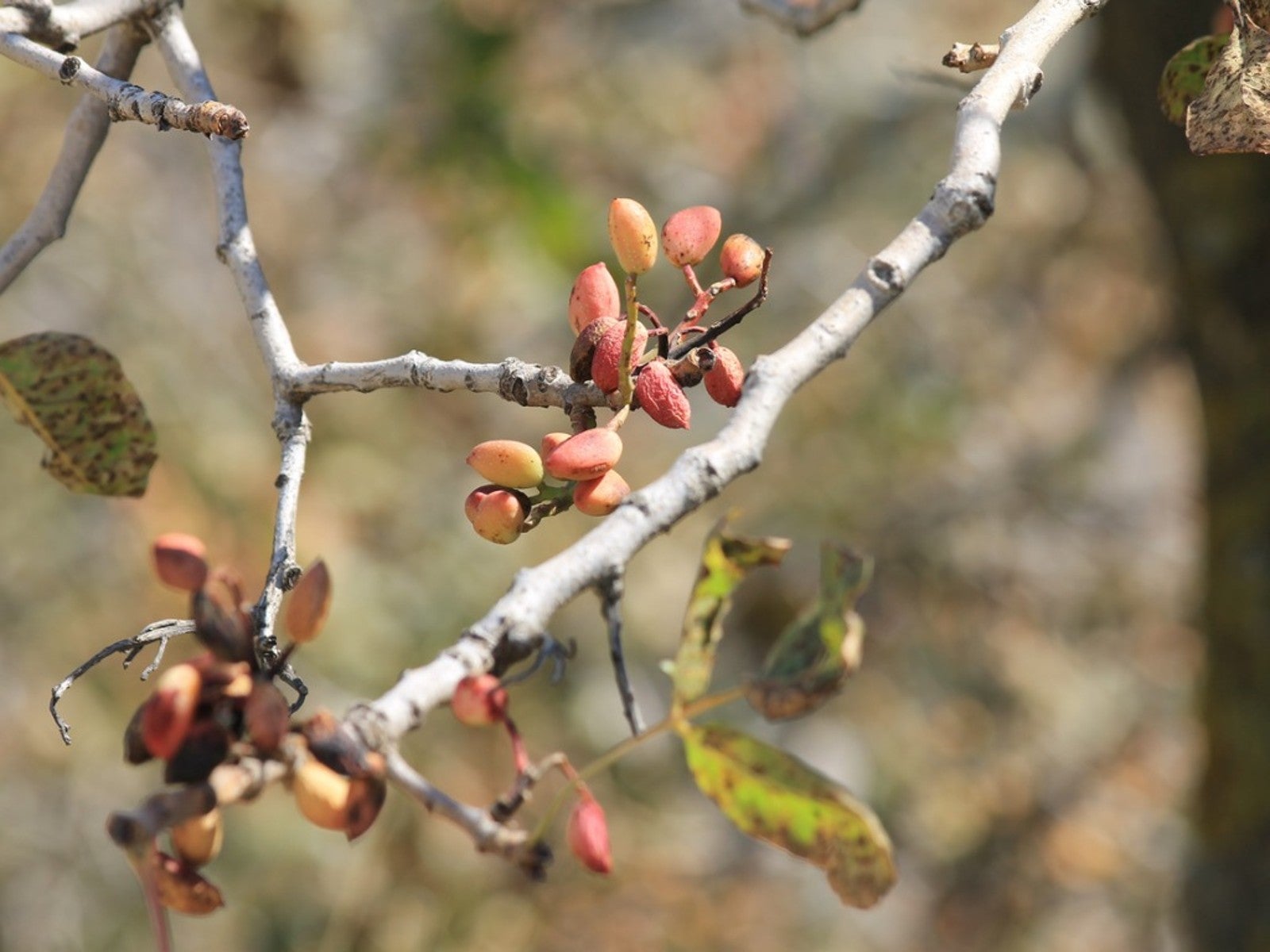Pistachio Problems In The Home Garden


There is no doubt pistachios are delicious and nutritious. Hardy in USDA zones 8 to 10, pistachio trees can make wonderful additions to home gardens in these warmer climates. Yet, there are many pistachio tree problems which can reduce harvest yields. If you're not finding the quantity of nuts you were expecting, consider these common pistachio issues.
Pistachio Pests
Ground squirrels
These nut-loving critters climb trees and feed on all stages of pistachio nuts. In addition to what they consume, squirrels collect and store nuts in their burrows. To discourage ground squirrels from making burrows near the garden, remove brush piles, tree stumps and debris.
Rabbits
Although rabbits can be cute, they cause severe damage to young trees by removing bark and girdling the trunk. Most damage occurs in winter and early spring when other food sources are scarce. Prevent damage with fencing or trunk guards.
Voles, mice and gophers
Like rabbits, these rodents can damage bark and girdle trees. However, damage is often below the soil line and can easily go unnoticed until it's too late to save the tree. Keep the area cleared of vegetative material to discourage these critters.
Birds
Some varieties of bird species, including crows, magpies and scrub-jays, will feed upon various stages of pistachio nuts. Smaller birds, like sparrows, can damage fruit buds in the winter. Remove roosting areas such as brush piles and use netting to protect crops.
Invertebrates
A variety of bugs can cause damage to pistachio trees or the nuts. Small insects typically feed on the nuts before the shell has hardened, which causes black pistachio nuts and nut drop.
Here are the primary invertebrate pests to monitor:
Sign up for the Gardening Know How newsletter today and receive a free copy of our e-book "How to Grow Delicious Tomatoes".
- California Buckeye bug (Neurocolpus longirostris) -- The green and brown nymphs hatch from eggs that overwinter at the base of buds. The straw-colored adults are .3 inches (.8 cm.) long.
- Calocoris bug (Calocris norvegicus) -- This pest doesn't overwinter on pistachio trees but will migrate when their host plants are cut back in the spring. The .25 inch (.6 cm.), green-bodied adults have two black dots on the thorax and reddish-brown tinted wings.
- Citrus flat mite -- An extremely small, warm-season pest which causes nuts to shrivel or have brown spots.
- Mealy bugs -- As these pests feed, they leave honeydew, which encourages sooty mold on the clusters of nuts.
- Pistachio psyllid (Agonoscena targionii) -- The adult stage of this insect is yellow with brown markings on the abdomen. Damage results in yellow, curling and necrotic leaves.
- Pistachio twig borer (Kermania pistaciella) -- The larvae from this small, dark-colored moth bore into the nut clusters and tunnel toward the twigs. Flower and nut drop are the primary symptoms.
- Psallus vaccinicola -- There is no common name for this tiny brownish-red insect, but they are commonly found near oak trees.
- Western tarnished plant bug (Lygus hesperus) -- These brownish-green insects can be identified by the yellow triangle located between their wings. Lygus bugs migrate from legume plants.
Pistachio Tree Diseases
Bacterial Diseases
- Crown gall (Agrobacterium tumefaciens) -- This pathogen stunts plant growth. Look for galls on roots and the crown below the soil surface.
- Pistachio dieback (Xanthomonas translucens) -- Entering through wounds, symptoms of this bacterial disease include sooty black lesions on pistachio branches and the trunk.
Fungal Diseases
- Alternaria late blight (Alternaria alternata) -- Symptoms include black lesions on immature pistachio nuts and leaves.
- Armillaria root rot (Armillaria mellea) -- There is no cure once this pistachio fungus infects the orchard, so using resistant rootstock is the best prevention. Symptoms include early leaf drop, death of the branches, and honey-colored mushrooms at the base of the tree.
- Panicle and shoot blight (Botryosphaeria dothidea) -- Brown pistachios, leaves and stems are visible signs of this fungal infection.
- Powdery mildew (Phyllactinia guttata) -- As in other crops, this fungus causes powdery, white patches on leaves and nuts.
- Rust (Uromyces terebinthi) -- Infections of this fungus can be identified by the presence of reddish-brown pustules on leaves, flowers and fruit.
- Septoria Leaf Spot (Septoris spp.) -- Dark spots of varying types will appear, depending upon which septoria species is present.

Laura Miller has been gardening all her life. Holding a degree in Biology, Nutrition, and Agriculture, Laura's area of expertise is vegetables, herbs, and all things edible. She lives in Ohio.